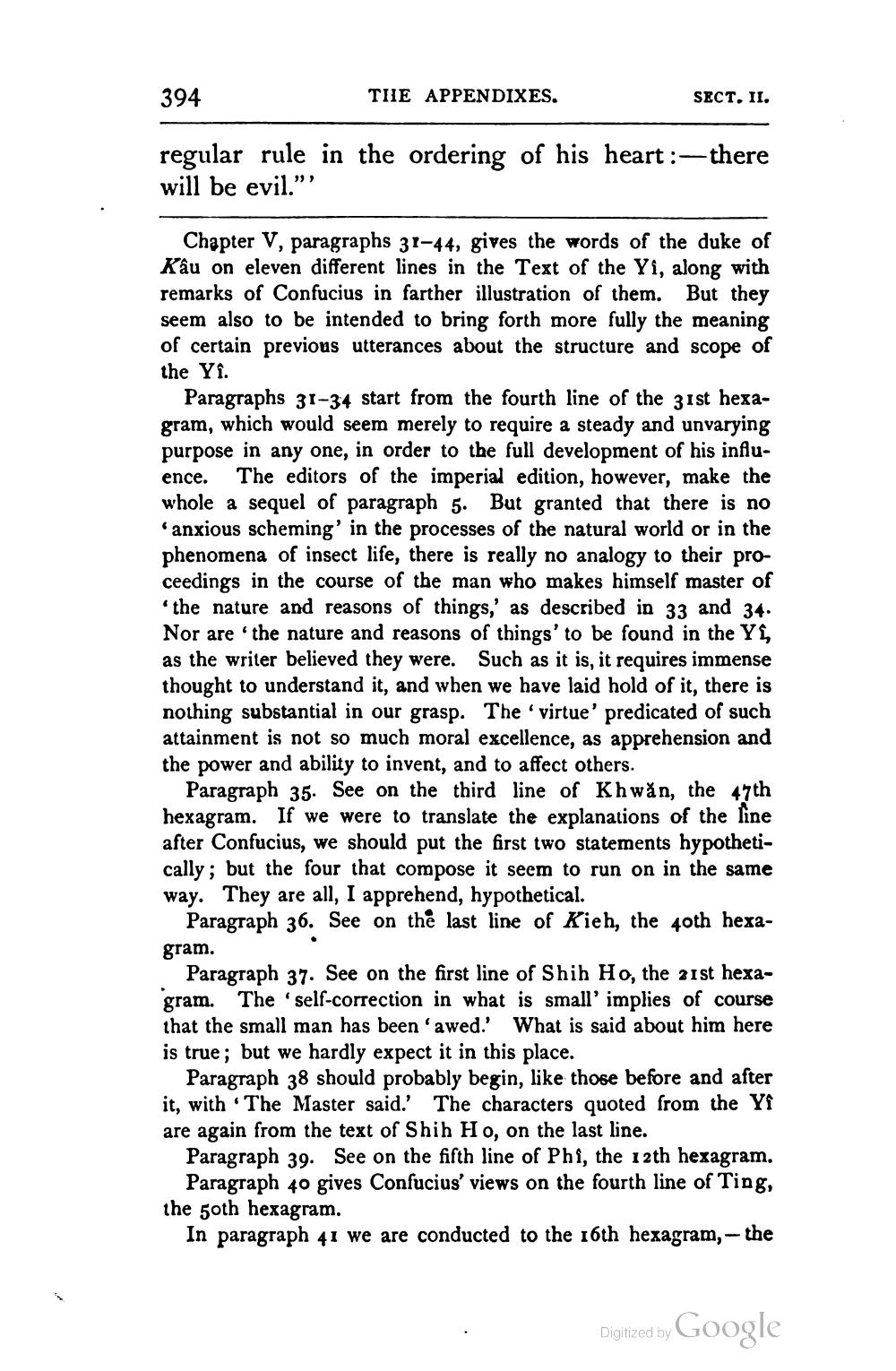________________
394
THE APPENDIXES.
SECT. II.
regular rule in the ordering of his heart :- there will be evil."
Chapter V, paragraphs 31-44, gives the words of the duke of Kâu on eleven different lines in the Text of the Yi, along with remarks of Confucius in farther illustration of them. But they seem also to be intended to bring forth more fully the meaning of certain previous utterances about the structure and scope of the Yi.
Paragraphs 31-34 start from the fourth line of the 31st hexagram, which would seem merely to require a steady and unvarying purpose in any one, in order to the full development of his influence. The editors of the imperial edition, however, make the whole a sequel of paragraph 5. But granted that there is no 'anxious scheming' in the processes of the natural world or in the phenomena of insect life, there is really no analogy to their proceedings in the course of the man who makes himself master of 'the nature and reasons of things,' as described in 33 and 34. Nor are the nature and reasons of things' to be found in the Yi, as the writer believed they were. Such as it is, it requires immense thought to understand it, and when we have laid hold of it, there is nothing substantial in our grasp. The 'virtue' predicated of such attainment is not so much moral excellence, as apprehension and the power and ability to invent, and to affect others.
Paragraph 35. See on the third line of Khwăn, the 47th hexagram. If we were to translate the explanations of the line after Confucius, we should put the first two statements hypothetically; but the four that compose it seem to run on in the same way. They are all, I apprehend, hypothetical.
Paragraph 36. See on the last line of Kieh, the 40th hexagram.
Paragraph 37. See on the first line of Shih Ho, the 21st hexagram. The 'self-correction in what is small' implies of course that the small man has been awed. What is said about him here is true; but we hardly expect it in this place.
Paragraph 38 should probably begin, like those before and after it, with The Master said.' The characters quoted from the Yi are again from the text of Shih Ho, on the last line.
Paragraph 39. See on the fifth line of Phi, the 12th hexagram.
Paragraph 40 gives Confucius' views on the fourth line of Ting, the 50th hexagram.
In paragraph 41 we are conducted to the 16th hexagram, - the
Digitized by Google




